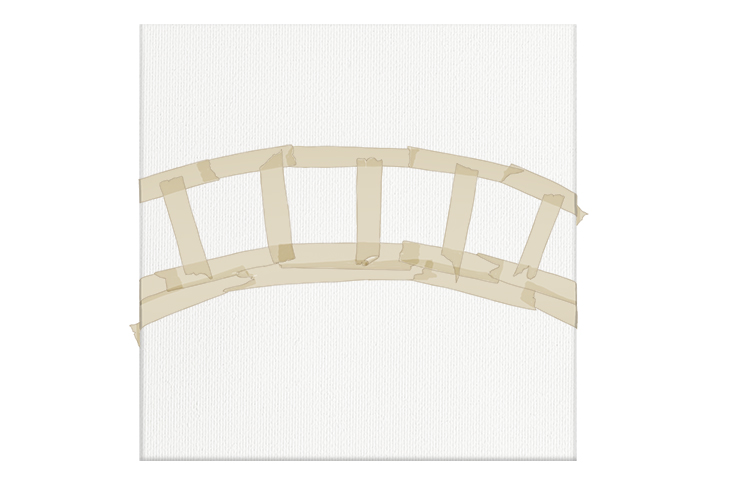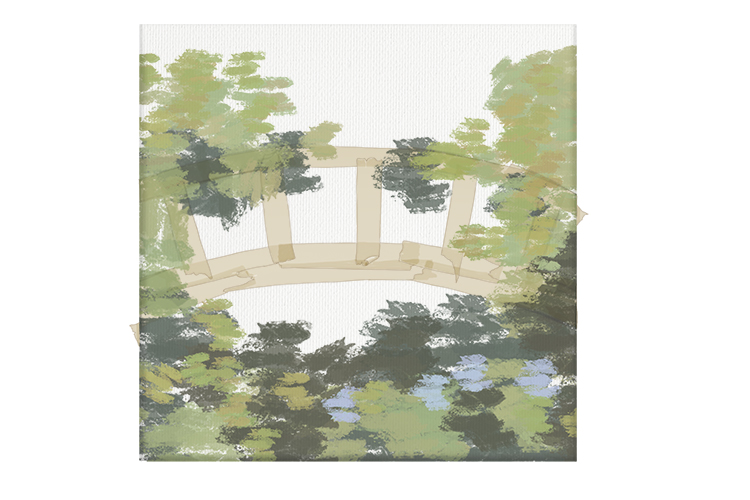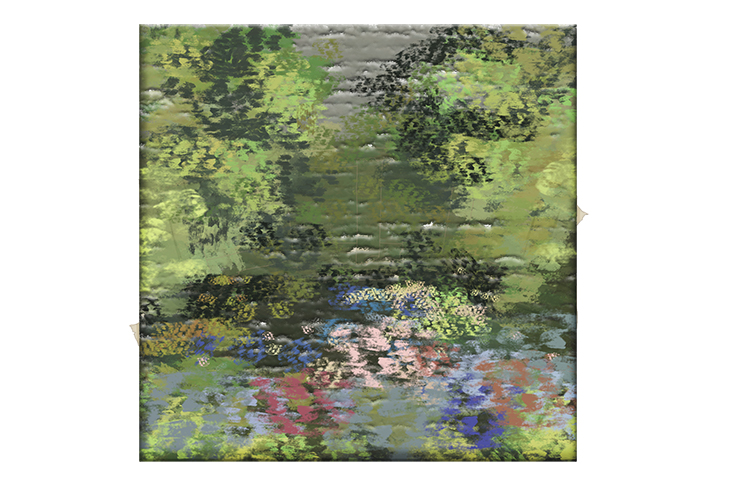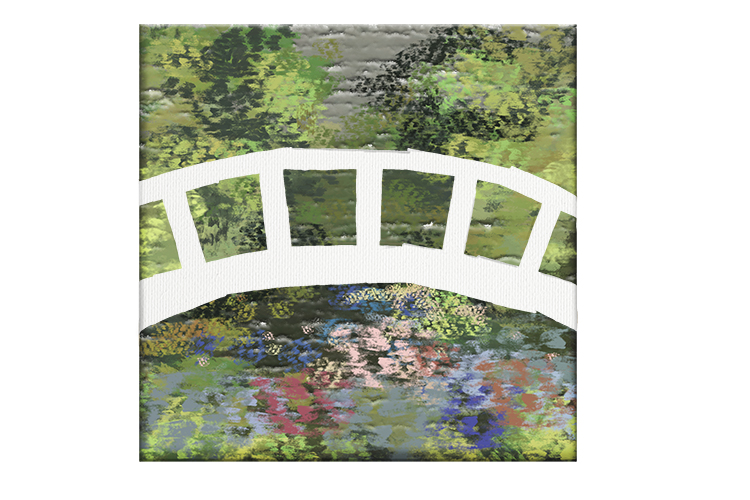Claude Monet Art Project
To get a feel of Claude Monet's paintings, and the way in which he created them, here is an exercise focusing on exactly that. The defining feature of Monet's work, and the element that makes it instantly recognisable, is the type of brushstroke he used. Rather than long, linear strokes or smooth, blurred application, which were the norm at the time, his technique used short, fast strokes.
The end product of this was a canvas entirely dappled in colour, almost pixelated, that from close up seemed almost imperceptible but at a distance revealed identifiable figures or scenes.
We will recreate this distinct style and create our own version of one of Monet's water lily paintings.
As many of the paintings featured the bridge over Monet's pond, we can make this the focal point of the painting. Start by using masking tape on the canvas (or paper) to mark out the shape of the bridge, from one side right across to the other.

Now the bridge is marked out, prepare your paints. Use a large palette or plate and put out as many different colours of paint as you have. You can mix other colours yourself, and make them lighter by adding white. If you can, use two different-size brushes, a smaller one and a larger one (this will help add depth to your painting).

We are ready to start! Using your brushes, or your fingers if you don't have any brushes, start applying paint to the canvas by dabbing the brush, leaving short, bold marks. Using darker colours below the bridge and lighter above will help distinguish the reflections in the water from the trees above (you can try to mirror the top half with the bottom to show a reflection).

By using two different-size brushes, you can create a sense of distance; use smaller marks to show details further away and larger ones in the foreground.

Once you are happy with the painting, remove the masking tape to reveal the bridge.

What a great impression of Monet's water lily pond.




